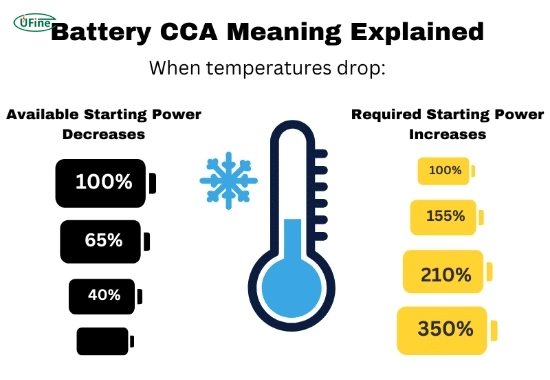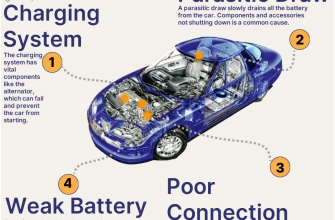When it comes to keeping your vehicle running smoothly, understanding the intricacies of your car battery is paramount․ A critical aspect of this is determining the ideal amperage for your car battery․ This article will guide you through the essentials, ensuring you have the right knowledge to make informed decisions for your vehicle’s power needs․
Understanding Amperage
Before diving into specifics, let’s clarify what amperage is․ Amperage, or current, is the flow of electric charge and is measured in amperes (A)․ In the context of a car battery, it’s essential to understand that different components of your vehicle will require varying levels of current to function correctly․
Why Amperage Matters
The amperage rating of a car battery impacts its performance significantly․ An optimal amperage ensures that your battery can start the engine and power accessories without straining the system․ Insufficient amperage can lead to starting issues, while too much can overheat and damage the battery․
Determining Your Car’s Amperage Needs
To determine the ideal amperage for your car battery, consider the following factors:
- Vehicle Type: Different vehicles have different power requirements․ Larger vehicles or those with more electronics (like heated seats, advanced infotainment systems, etc․) may demand higher amperage․
- Cold Cranking Amps (CCA): This is a crucial metric that indicates a battery’s ability to start an engine in cold temperatures․ The CCA rating should meet or exceed the manufacturer’s specifications for your vehicle․
- Reserve Capacity (RC): This measurement indicates how long a battery can run on its own without the engine․ A higher RC is essential for vehicles that rely heavily on electrical components․
Choosing the Right Battery
Once you’ve assessed your vehicle’s requirements, it’s time to select a battery․ Here are a few tips:
- Consult Your Owner’s Manual: This should be your first stop․ It will provide specifications, including the recommended CCA and RC ratings․
- Consider Your Climate: If you live in a colder climate, opt for a battery with a higher CCA to ensure reliable starts during frigid temperatures․
- Research Brands: Not all batteries are created equal․ Look for reputable brands that offer warranties and have a history of reliability․
Installation and Maintenance
Proper installation and maintenance are crucial for maximizing your battery’s performance:
- Professional Installation: If you’re unsure about installing the battery yourself, it’s wise to have it done by a professional to avoid issues․
- Regular Checks: Periodically check the battery terminals for corrosion and ensure that the connections are tight․
- Keep It Charged: Ensure your battery remains charged, especially if your vehicle is not used frequently․
Determining the ideal amperage for your car battery is not just about numbers; it’s about ensuring your vehicle operates efficiently and reliably․ By understanding your car’s needs, choosing the right battery, and maintaining it properly, you can keep your vehicle running smoothly for years to come․
Remember, the right amperage is not just a technical specification—it’s the lifeblood of your vehicle’s electrical system․ Take the time to get it right, and your car will thank you․
As we delve deeper into the world of car batteries, it’s essential to recognize that determining the ideal amperage isn’t merely about numbers; it encompasses various other factors that can significantly impact your battery’s performance․ Here, we will explore additional considerations to ensure you’re well-equipped for all your automotive needs․
The Role of Age and Maintenance
Battery age plays a crucial role in its amperage capacity․ Over time, lead-acid batteries naturally lose some of their ability to hold a charge, which can affect their amperage output․ Regular maintenance checks can extend the life of your battery and its amperage capacity:
- Regular Testing: Use a multimeter or take your battery to a professional for testing․ This will help determine if it still meets the required amperage․
- Cleaning: Corroded terminals can impede current flow․ Regularly cleaning battery terminals ensures optimal performance․
- Visual Inspections: Look for signs of wear and tear, such as cracks or leaks․ These issues can compromise battery efficiency and safety․
The Impact of Electrical Accessories
Modern vehicles come equipped with a plethora of electrical accessories, from infotainment systems to advanced driver-assistance systems (ADAS)․ Each of these components draws power from the battery:
- High-Powered Accessories: If you frequently use high-draw accessories such as aftermarket sound systems or additional lighting, consider a battery with a higher amperage rating to accommodate these demands․
- Idle Power Drain: Accessories that remain powered while the engine is off can drain the battery․ It’s important to balance your vehicle’s electrical demands with the battery capacity to prevent premature failure․
Battery Types and Their Amperage Ratings
There are several types of batteries available on the market, each with its unique characteristics and amperage ratings․ Understanding these can help you make the right choice:
- Lead-Acid Batteries: These are the most common types, typically offering a range of CCA and RC ratings suitable for various vehicles․
- AGM (Absorbent Glass Mat): AGM batteries provide higher amperage and are more resistant to vibration and temperature extremes, making them ideal for high-performance vehicles․
- Lithium-Ion Batteries: These are becoming increasingly popular due to their lightweight and high amperage capabilities․ However, they often come at a premium price․
Future-Proofing Your Battery Choice
As automotive technology advances, the electrical demands of vehicles are likely to increase․ Here are some considerations for future-proofing your battery choice:
- Opt for Higher Ratings: If you anticipate adding more accessories or upgrading your vehicle in the future, consider a battery with a higher amperage rating than currently needed․
- Research Emerging Technologies: Stay informed about developments in battery technology, such as solid-state batteries, which may offer enhanced performance and longevity․
Determining the ideal amperage for your car battery involves a multifaceted approach․ From understanding your vehicle’s specific requirements to staying proactive with maintenance and keeping an eye on future trends, making informed decisions can significantly enhance your driving experience․ Remember, a well-maintained battery is not just an accessory; it’s the heart of your vehicle’s electrical system, deserving the utmost attention and care․
Equipped with this knowledge, you can confidently navigate the complexities of car batteries, ensuring that your vehicle remains reliable and ready for the road ahead․










This guide is a lifesaver! I had no idea about the importance of checking my owner
Great read! I appreciate how the author explained the different factors affecting a car
I love how detailed this article is! It covers everything from amperage to vehicle type, making it a comprehensive resource for anyone looking to understand their car battery better.
I found this article to be very enlightening. Understanding the Cold Cranking Amps and Reserve Capacity is crucial for any car owner. Thank you for sharing this knowledge!
Fantastic article! The tips on choosing the right battery were spot on. I feel much more confident in making an informed decision now.
This article is incredibly informative! I never realized how important amperage is for my car battery. The breakdown of terms was very helpful!